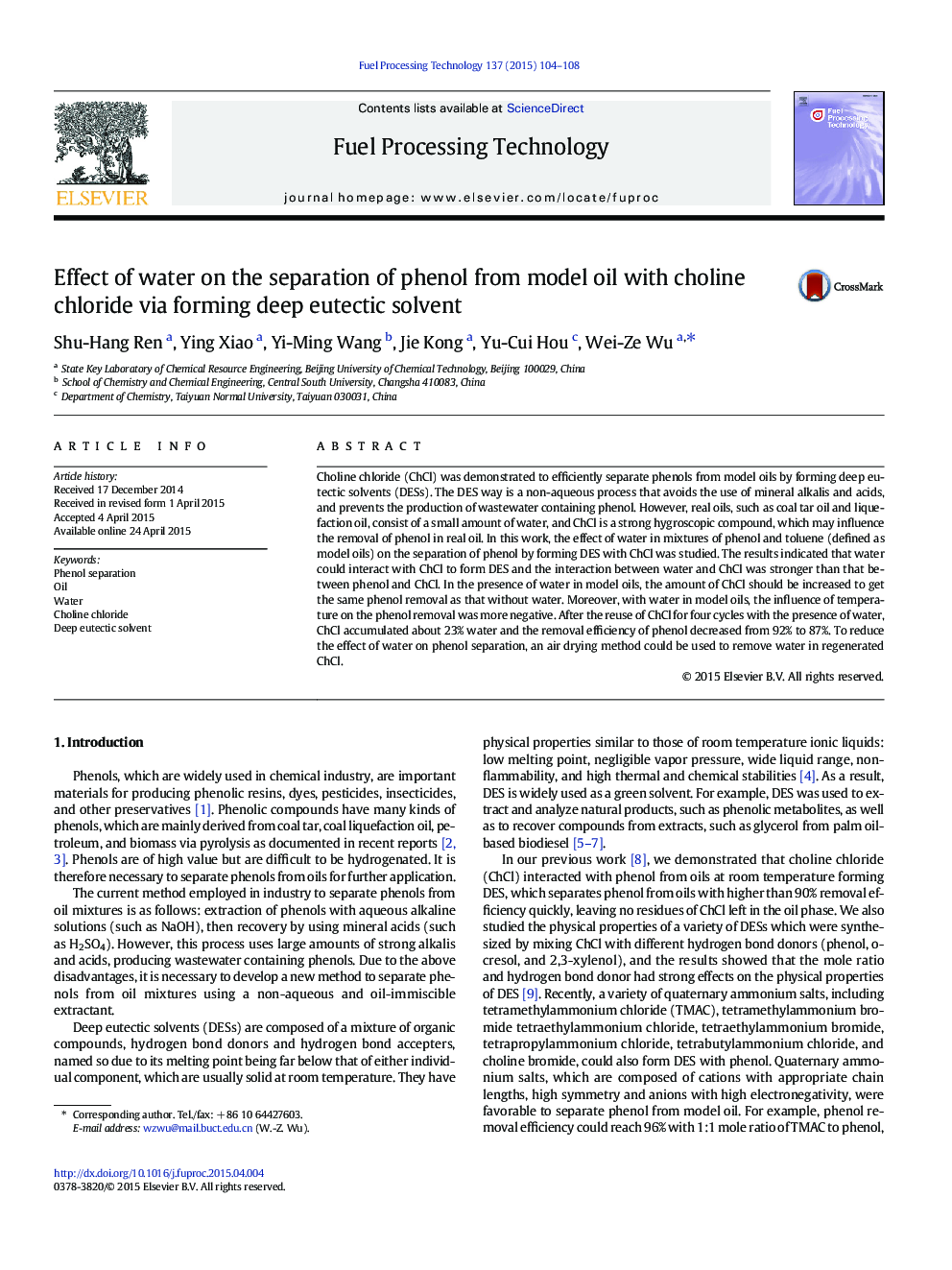| Article ID | Journal | Published Year | Pages | File Type |
|---|---|---|---|---|
| 209465 | Fuel Processing Technology | 2015 | 5 Pages |
•The solubility of water in oils has a relationship with the content of phenol.•Water in oil can decrease the phenol-separation efficiency.•Water can compete for ChCl with phenol to form DES.•The phenol removal is sensitive to temperature in the presence of water.•Water accumulates in the regenerated ChCl after the reuse of ChCl.
Choline chloride (ChCl) was demonstrated to efficiently separate phenols from model oils by forming deep eutectic solvents (DESs). The DES way is a non-aqueous process that avoids the use of mineral alkalis and acids, and prevents the production of wastewater containing phenol. However, real oils, such as coal tar oil and liquefaction oil, consist of a small amount of water, and ChCl is a strong hygroscopic compound, which may influence the removal of phenol in real oil. In this work, the effect of water in mixtures of phenol and toluene (defined as model oils) on the separation of phenol by forming DES with ChCl was studied. The results indicated that water could interact with ChCl to form DES and the interaction between water and ChCl was stronger than that between phenol and ChCl. In the presence of water in model oils, the amount of ChCl should be increased to get the same phenol removal as that without water. Moreover, with water in model oils, the influence of temperature on the phenol removal was more negative. After the reuse of ChCl for four cycles with the presence of water, ChCl accumulated about 23% water and the removal efficiency of phenol decreased from 92% to 87%. To reduce the effect of water on phenol separation, an air drying method could be used to remove water in regenerated ChCl.
